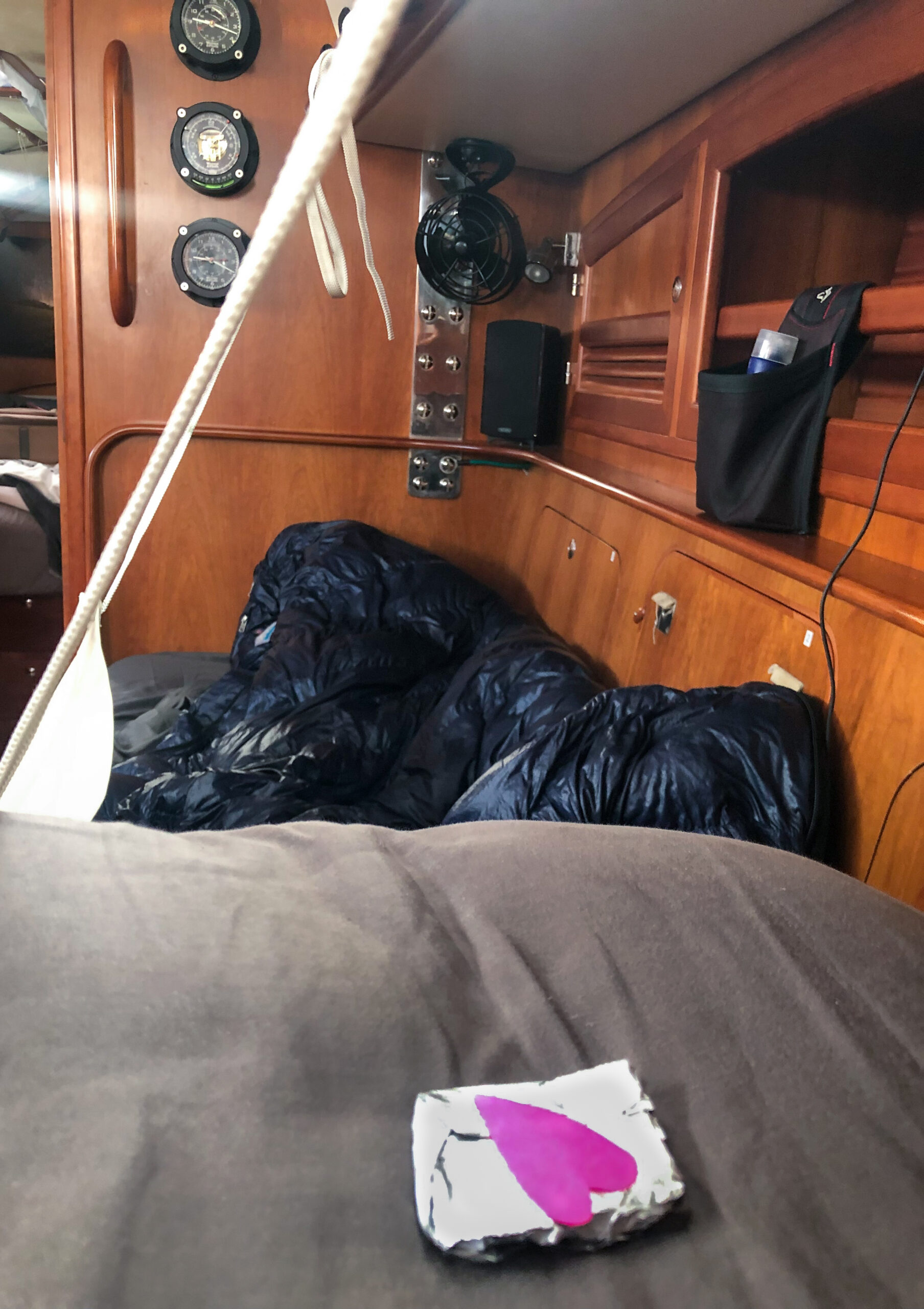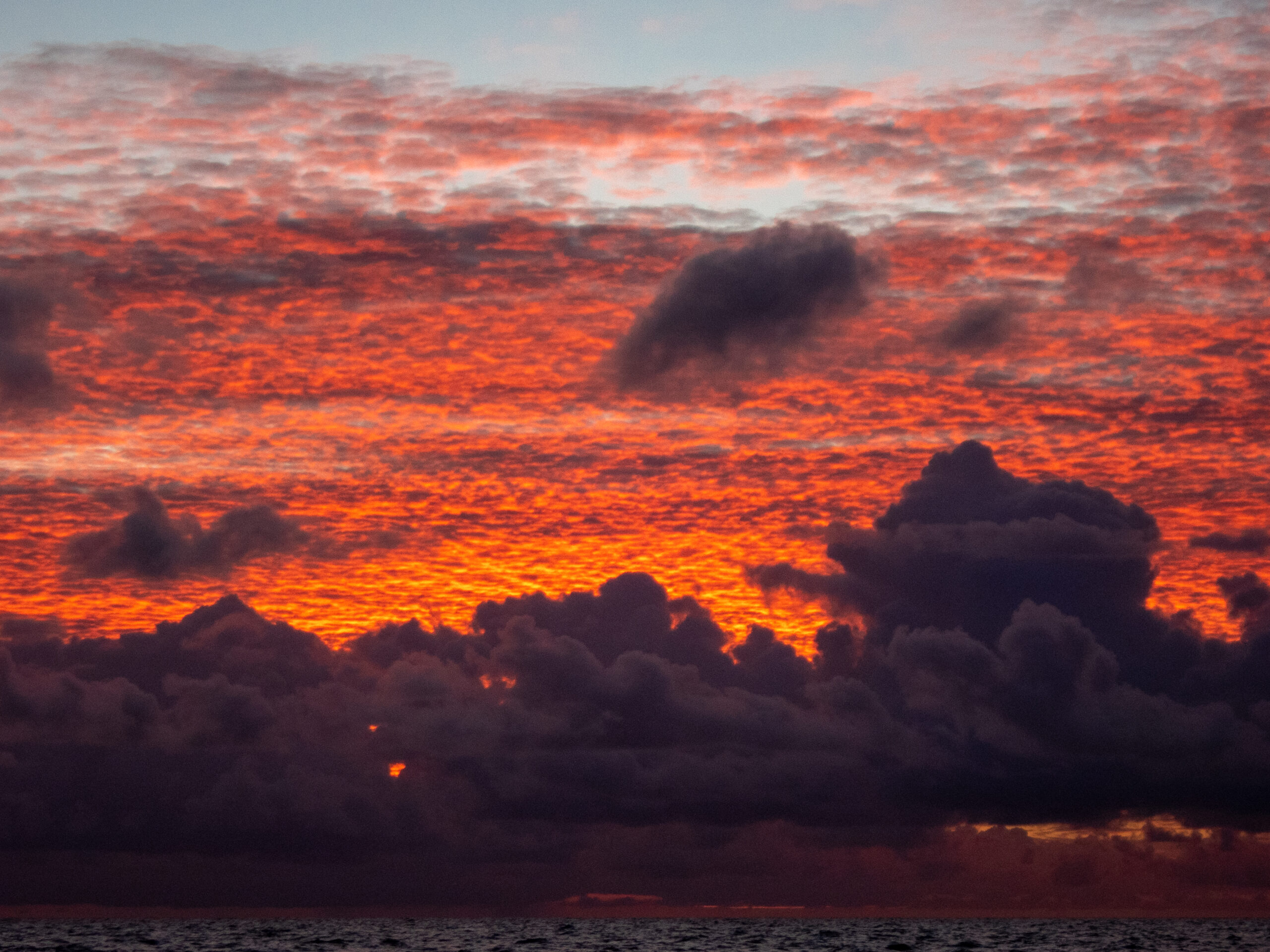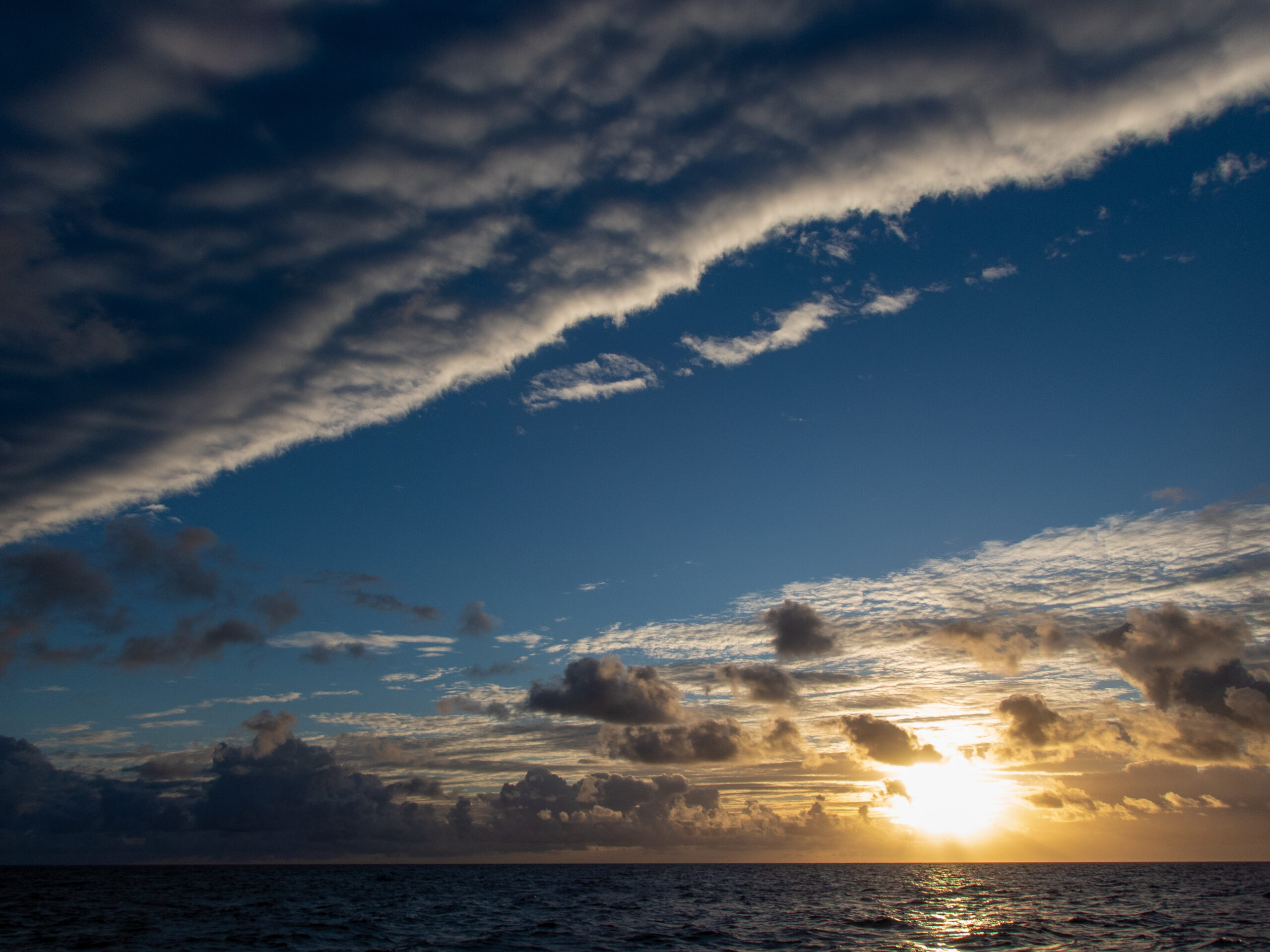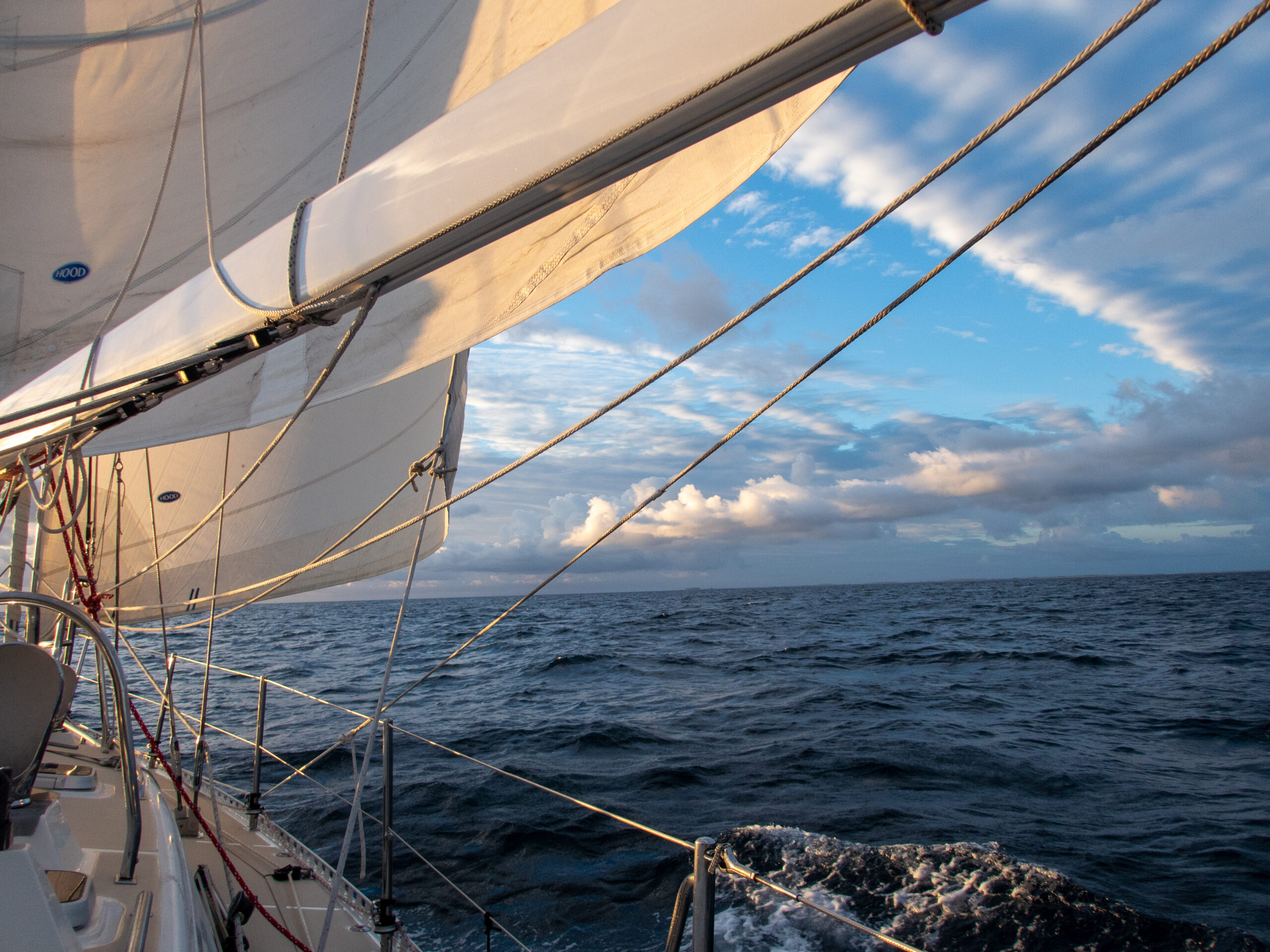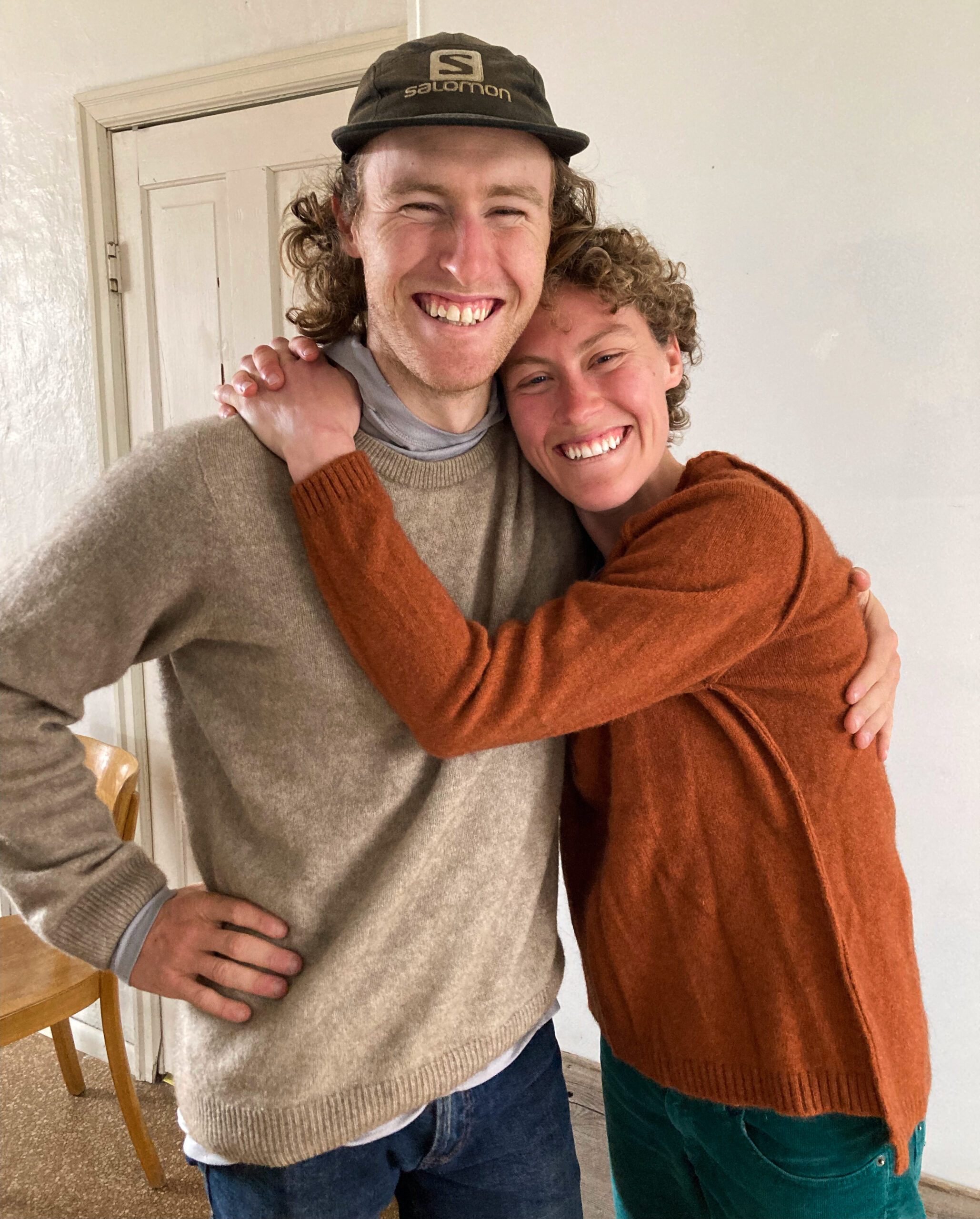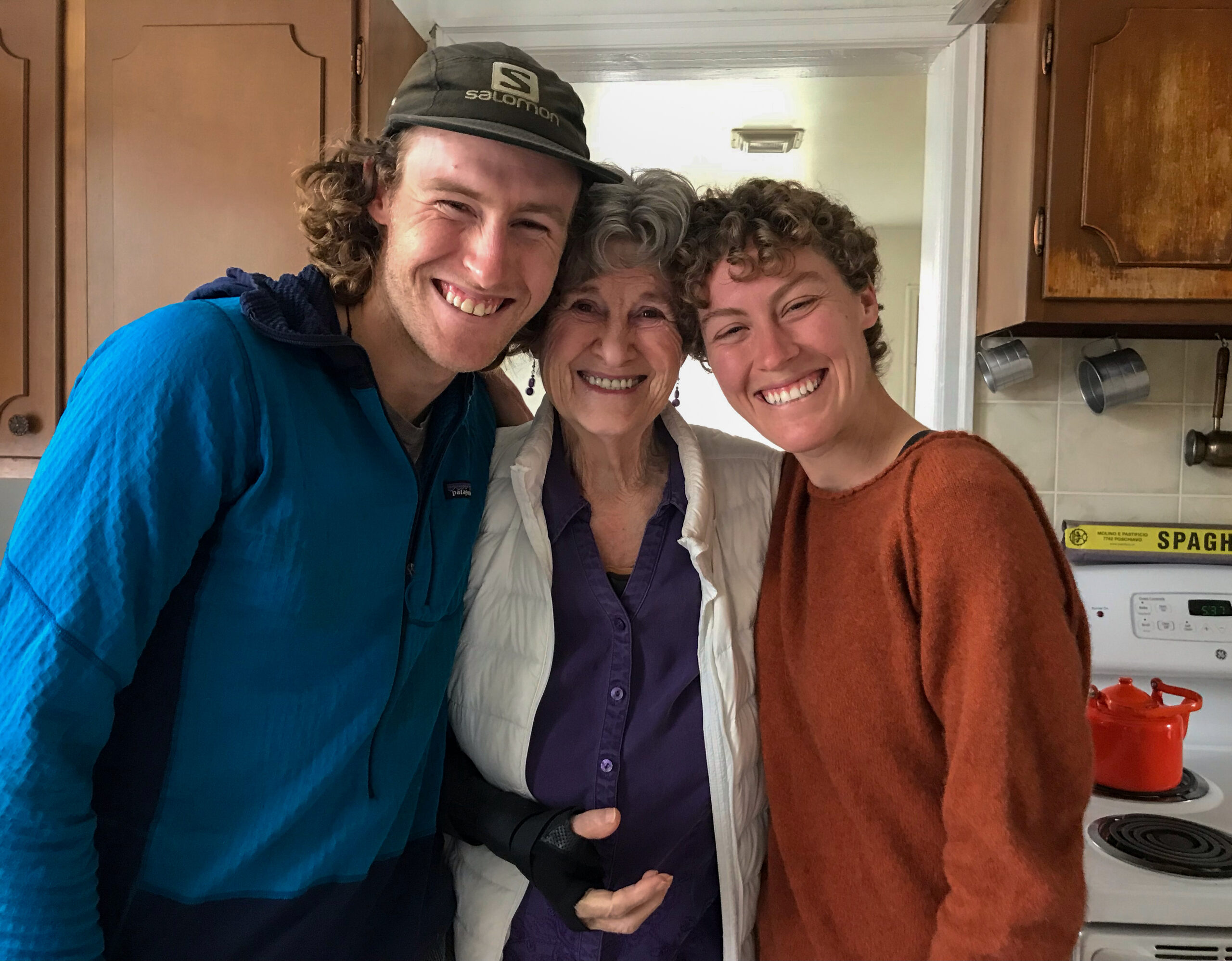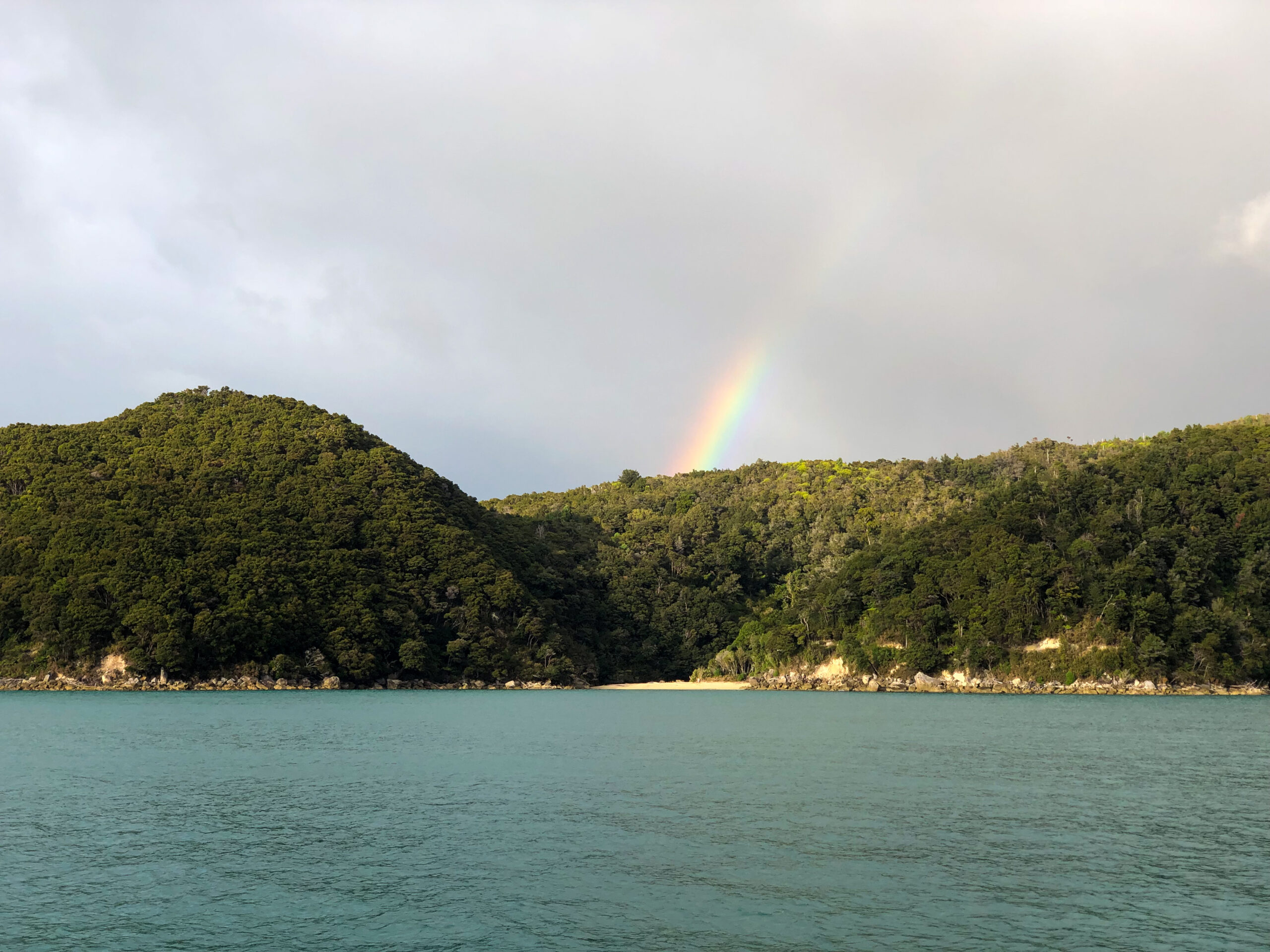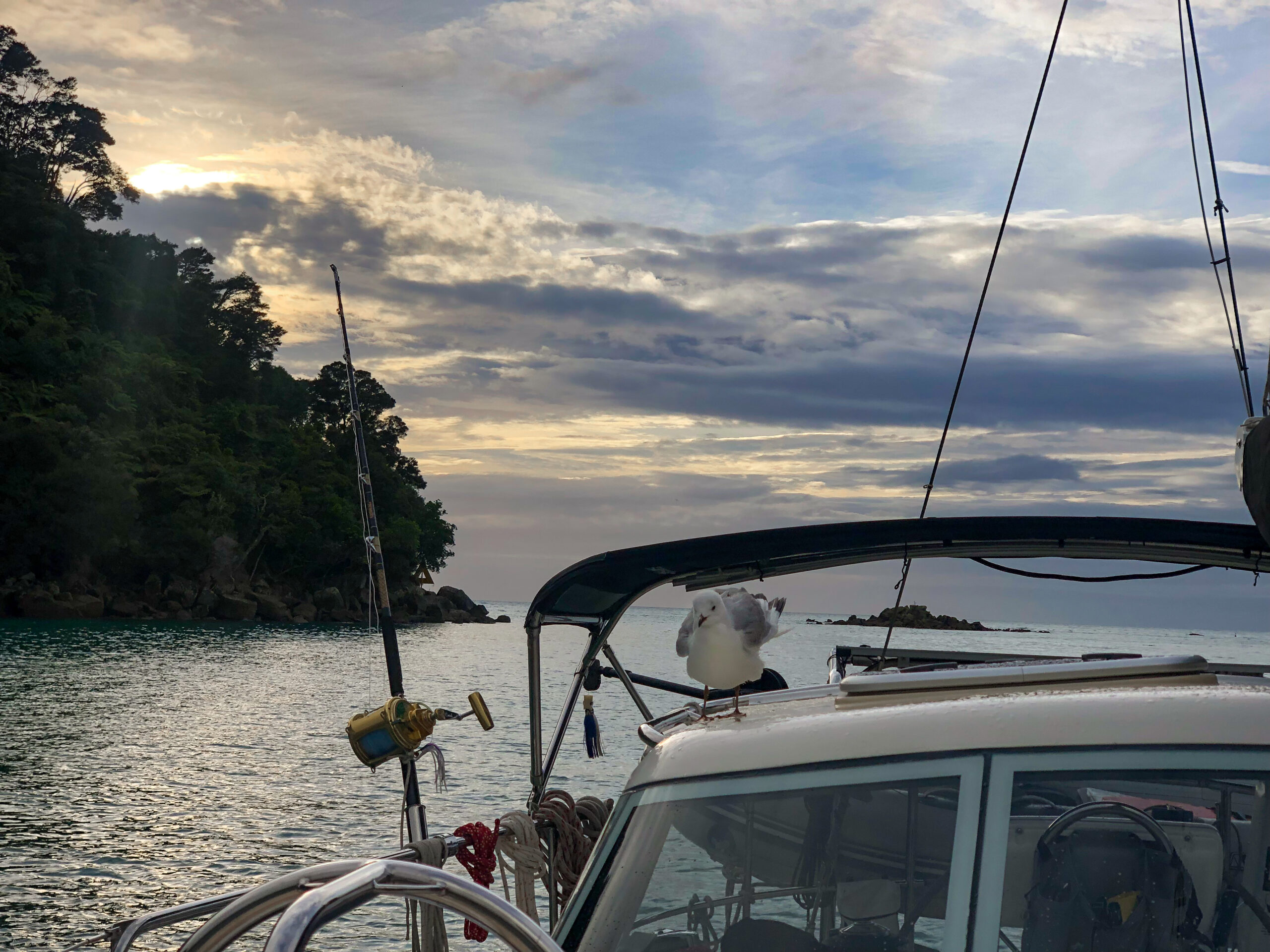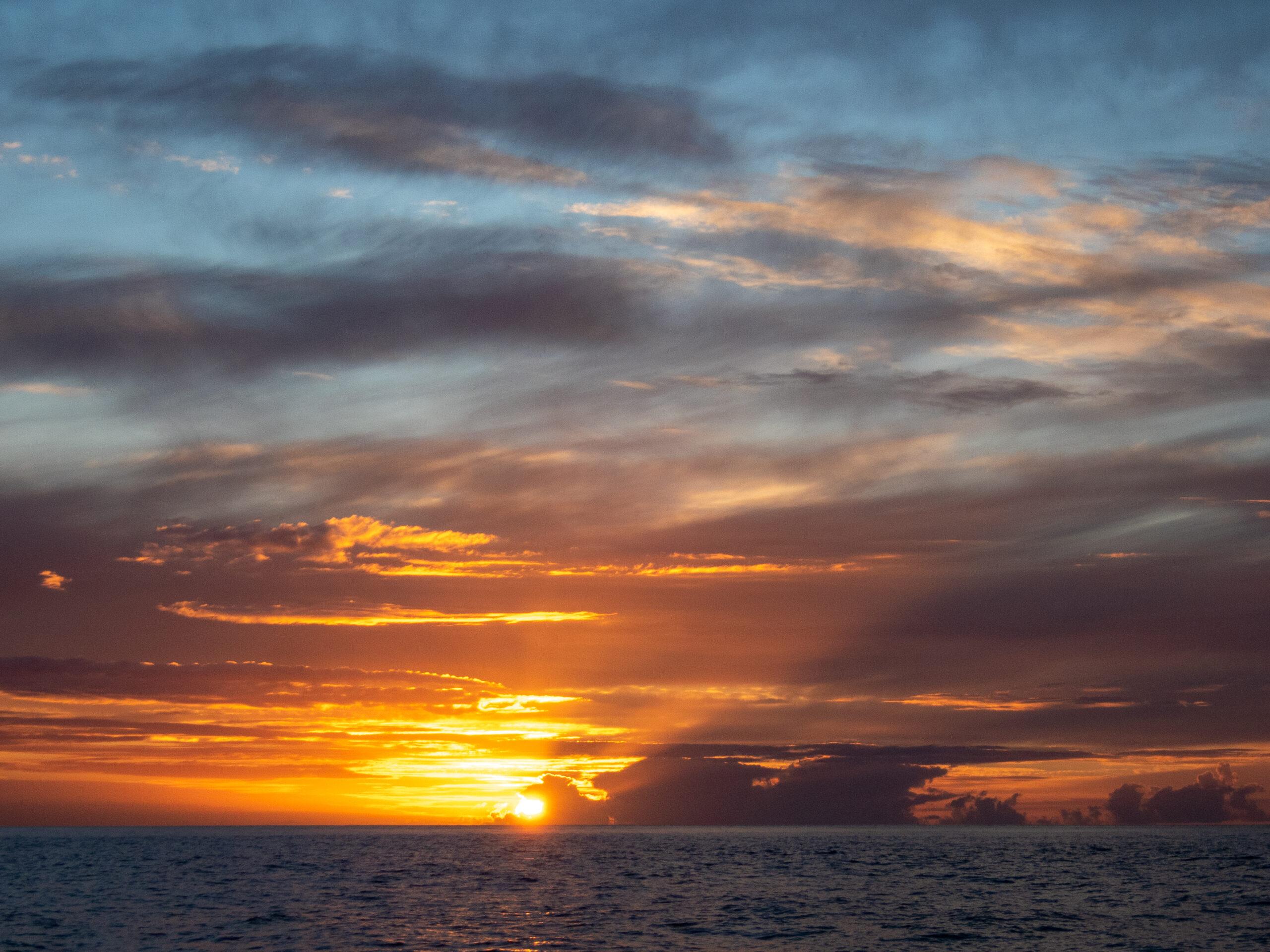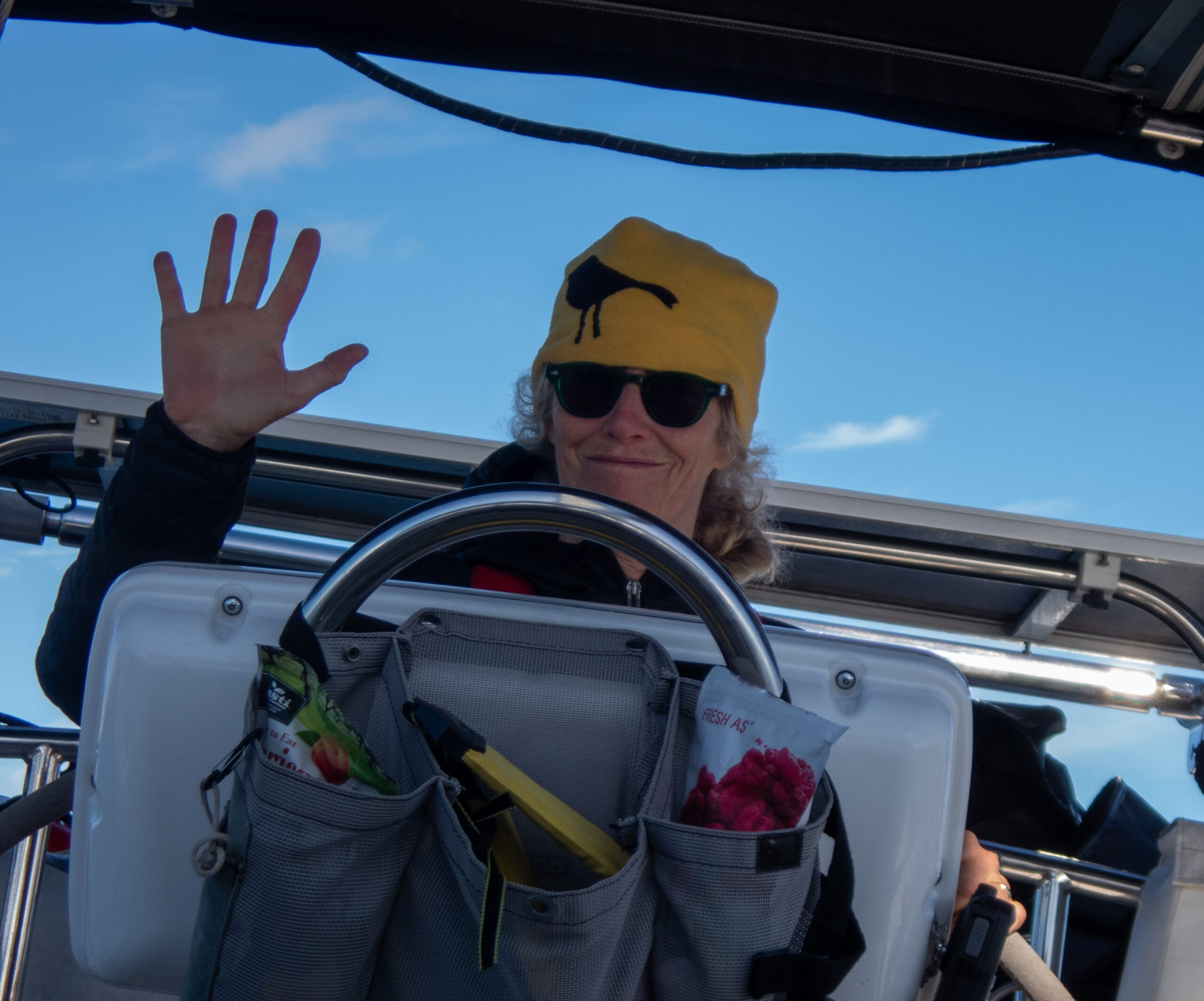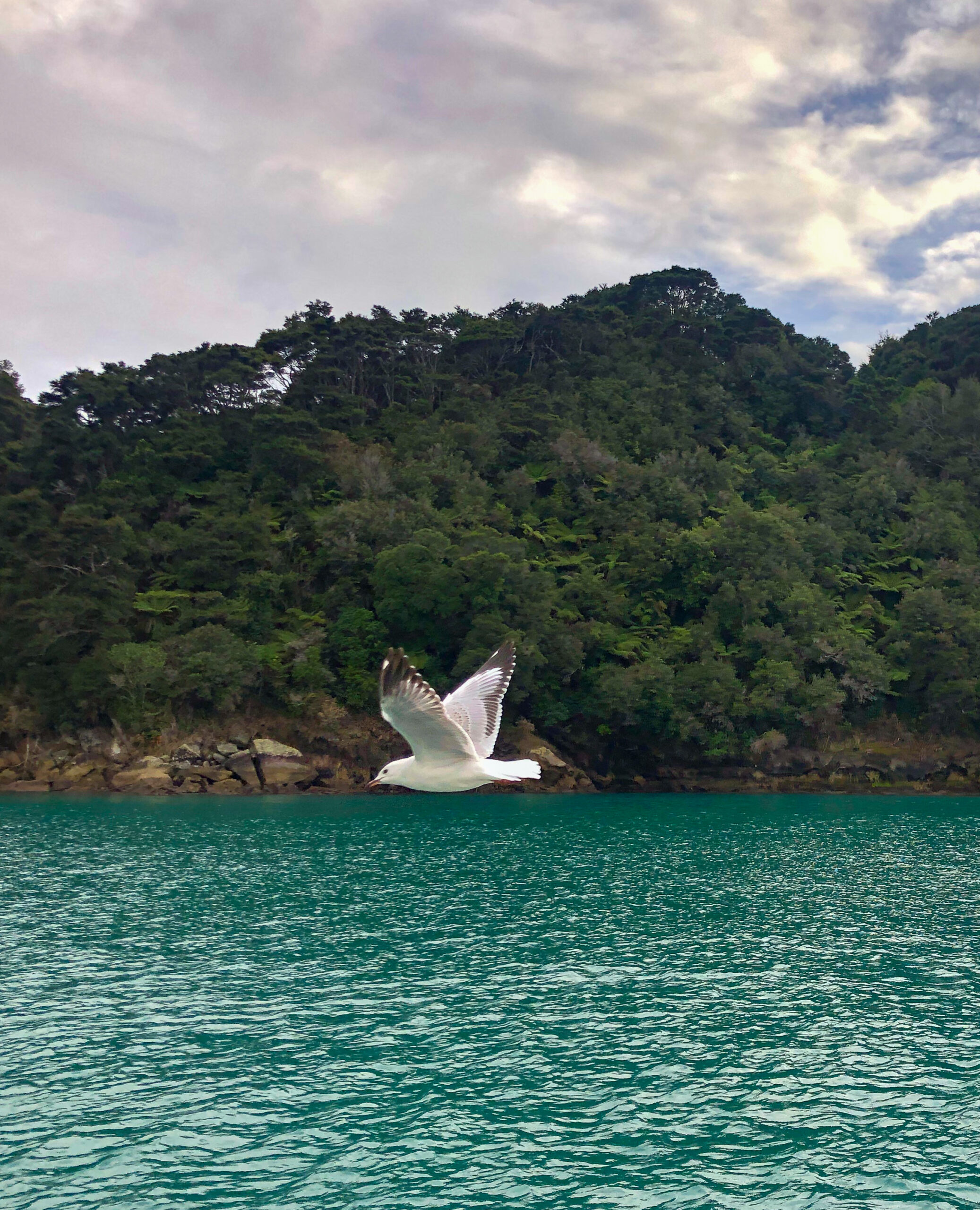It was a bit spooky sailing out of Milford at midnight without a moon. We had our inbound tracks on the chartplotter to follow, but it’s pretty amazing how disorienting darkness can be, even for feeling whether to turn to port or starboard to follow a line. Also with the steep granite walls, we didn’t feel 100% confident in our GPS. Diana went to the bow, and I stepped away from the helm to try to orient myself every few minutes, as we moved cautiously down the fiord. Though the GPS did seem to have a decent idea about where we were, it was also reassuring to have radar confirming the distance to the rock walls on either side. But what helped me relax most at the helm, was when Diana shouted that the dolphins had come to escort us out. I leaned over the rail and could just see and hear them splashing off our port headed for the bow. It was hard not to feel like they’d showed up intentionally to reassure us.

One of the many challenges of the passage from Milford up around Cape Farewell into the Cook Strait, is that there is only one place you might possibly stop, but that requires negotiating a river bar entrance at Westport (just north of Cape Foulwind!), which is safe only in decent weather. Otherwise, it’s a solid three day run (if you keep your speed up), which just barely fits into the cycle of weather shifting from South to North. The weather window that presented itself to us seemed pretty typical, catching the end of a southerly, motoring and motor-sailing through variable winds in a race to meet the Cape with relatively light winds rather than the usual NW or SE gale.Leaving sooner, we’d have had more wind to sail with, but we’d risk arriving too early for the switch of winds at Cape Farewell.
Diana took the first watch just after 2 AM after we cleared the hazards on the north side of the entrance to Milford and could head more directly north. “Really cold, icy hands,” she wrote in the margins of the logbook. “Overcast skies heading further out to clear Arawua Point/Big Bay Bluff.” Just after sunrise on my watch, I got a glimpse of the mountains south of Mt Aspiring, which reminded me of Wyatt’s 100 mile run the length Aspiring National Park. I wondered if he could have seen the Tasman Sea from any of those lofty ridge lines he traversed?



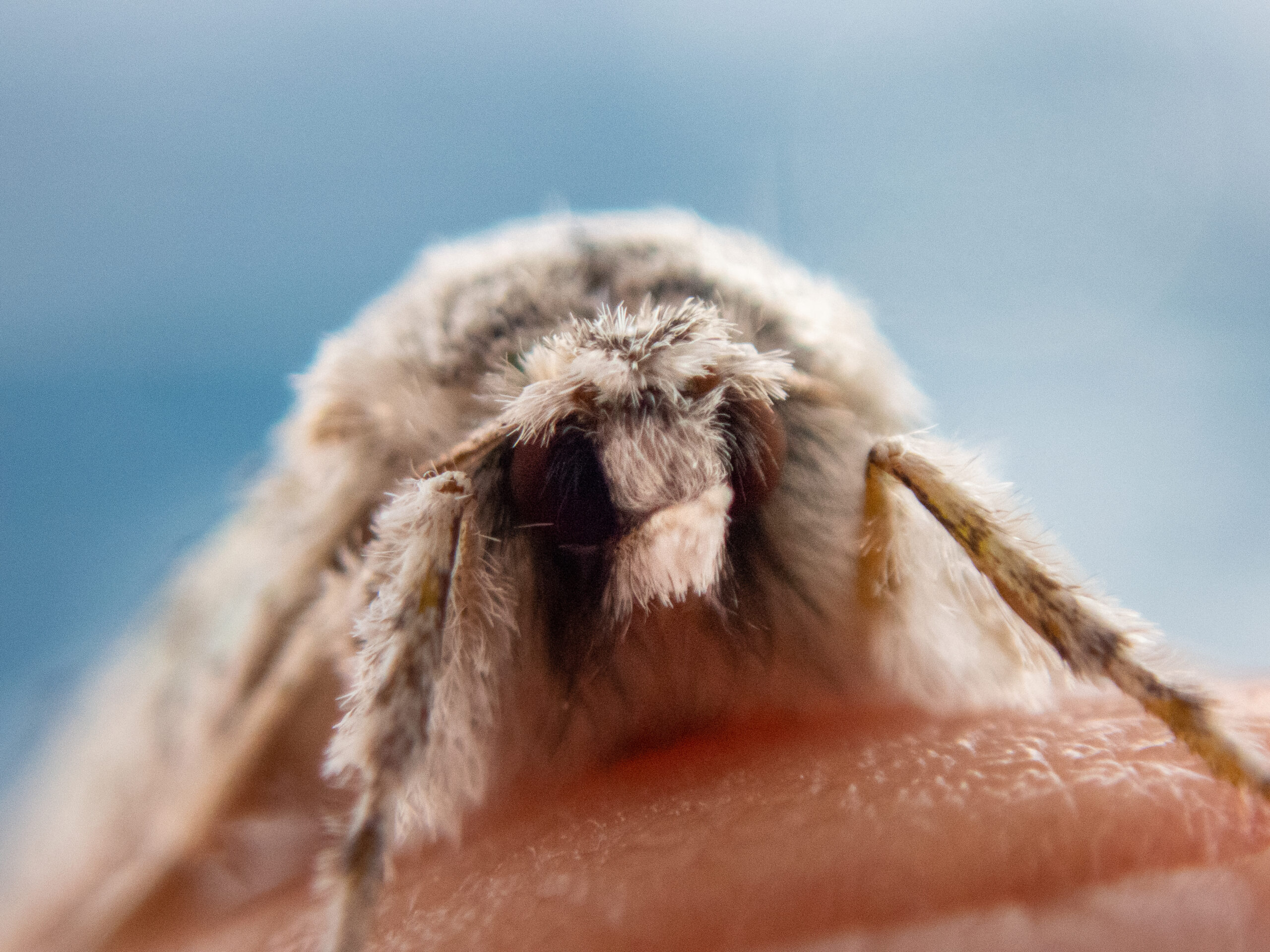
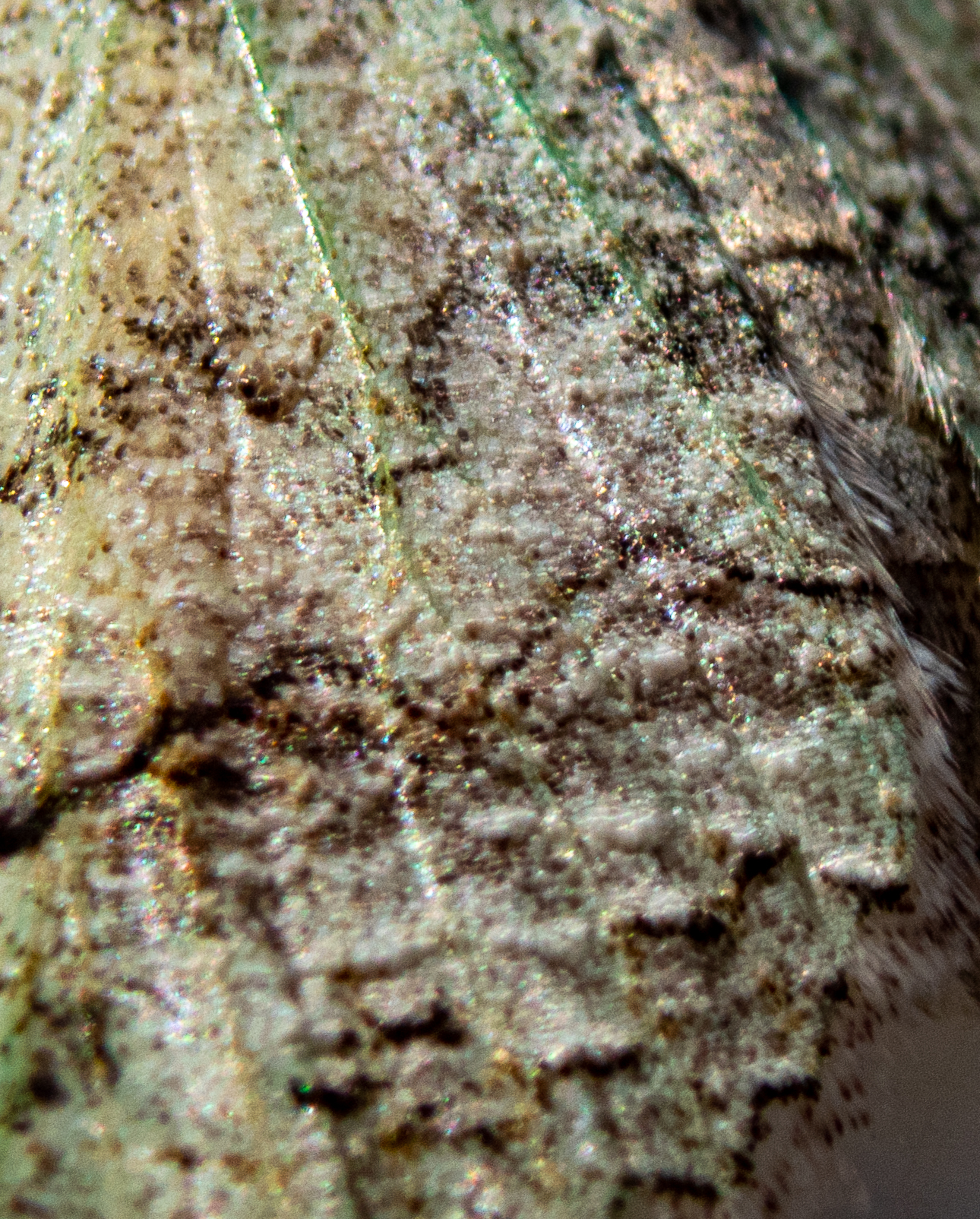


Also in the logbook, I see a lot of scribbles in these notes about fuel rates, and estimates of actual fuel burned for miles ‘made good.’ Allora carries 190 gallons full which is more than enough for the distance as long as the weather is reasonably cooperative, but it makes a difference if you’re burning 1.5 gallons/hour or pushing the engine and burning 2.5 gallons/hour. The extra gallon doesn’t double your speed. People better at the maths would probably be able to calculate exactly what fuel rate is most efficient. I settled upon 1.6 or 1.7 as an nice compromise of efficiency, speed (to make our date at Cape Farewell) and comfort. 
We had rain. We had current steadily set against us. We had dolphins streak by in the night leaving comet trails in the bioluminescence. We fussed about the wind, almost-but-not-quite-enough to sail, ever creeping up on the nose. We almost lost a batten in the mainsail. Then later, Otto, our autopilot made a sudden decision to turn hard to starboard out of nowhere. The switch for the high pressure pump on the watermaker heated up and set off the smoke alarm (naturally at night-while I was off watch). We saw no other boats besides the occasional fishing boat working closer to shore. We caught a glimpse of Aoraki (Mt Cook) at sunset, and at Cape Foulwind a couple of seal lions waved as we passed by.

On the last night, as seems to be a theme lately, Diana drew the toughest watch of the passage. There was just no way to completely avoid a patch of heavy winds slated to meet us as we approached the Cape, straight on the nose. We tried to time it for the least possible, but Poseidon wasn’t going to let us off feeling too clever. For her whole watch, Allora slammed into 20 knots on the bow clawing her way up the last bit of coast to Cape Farewell. Finally, after calling Farewell Maritime radio to try to find out whether it was generally considered advisable to cut the corner at Kahurangi shoals (which they weren’t really able to commit to), we decided it probably wasn’t, so we slogged on. Diana went off watch and very soon after, we were able to fall off the wind. Just five degrees made a big difference. Pretty soon we were motor-sailing and by Diana’s last sunrise watch she was able to shut the engine off and sail along Farewell Spit, an amazing 25km sandbank off the northwestern corner of the South Island at the opening of Cook Strait. The winds were light but sweet. Finally! ~MS
